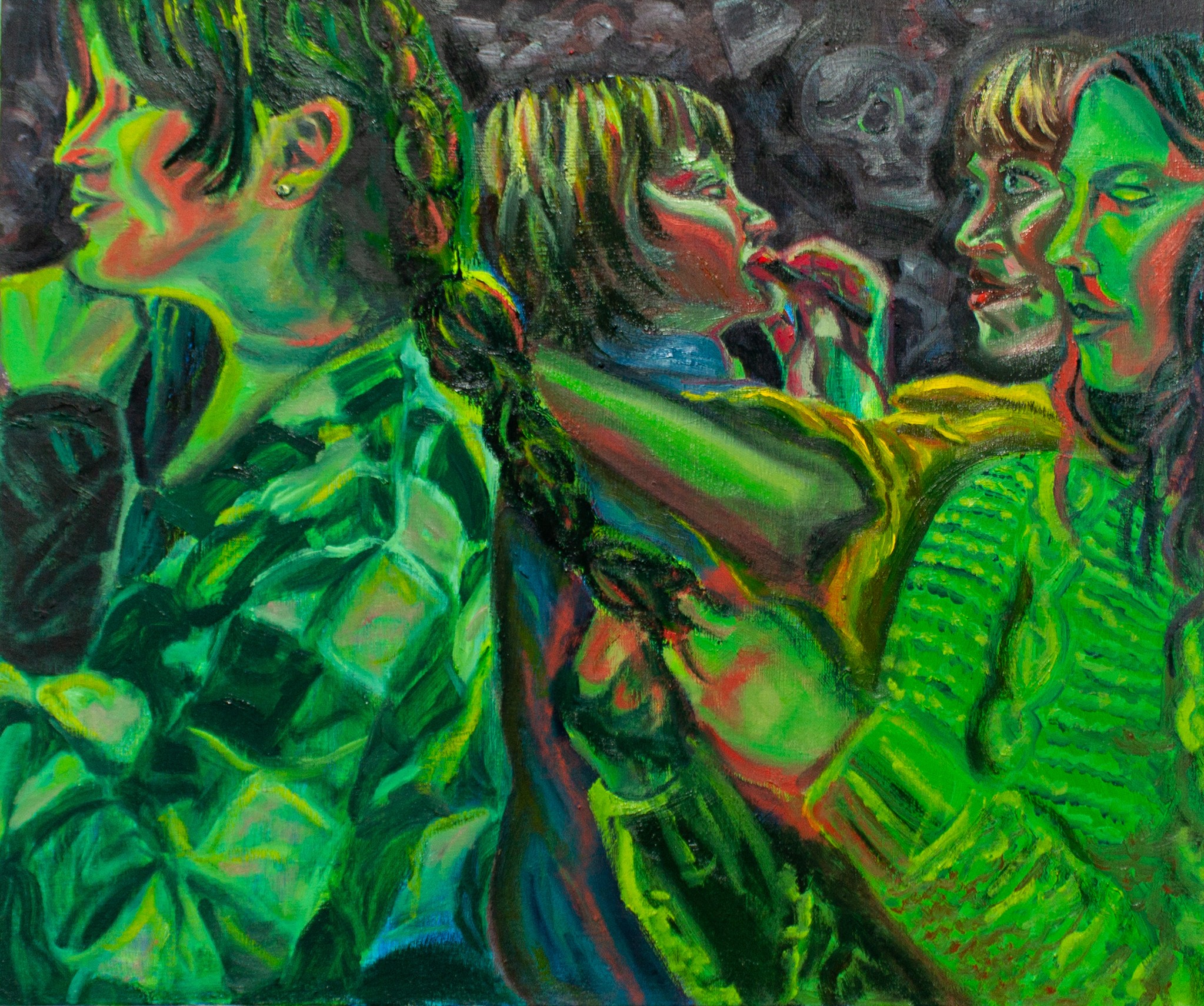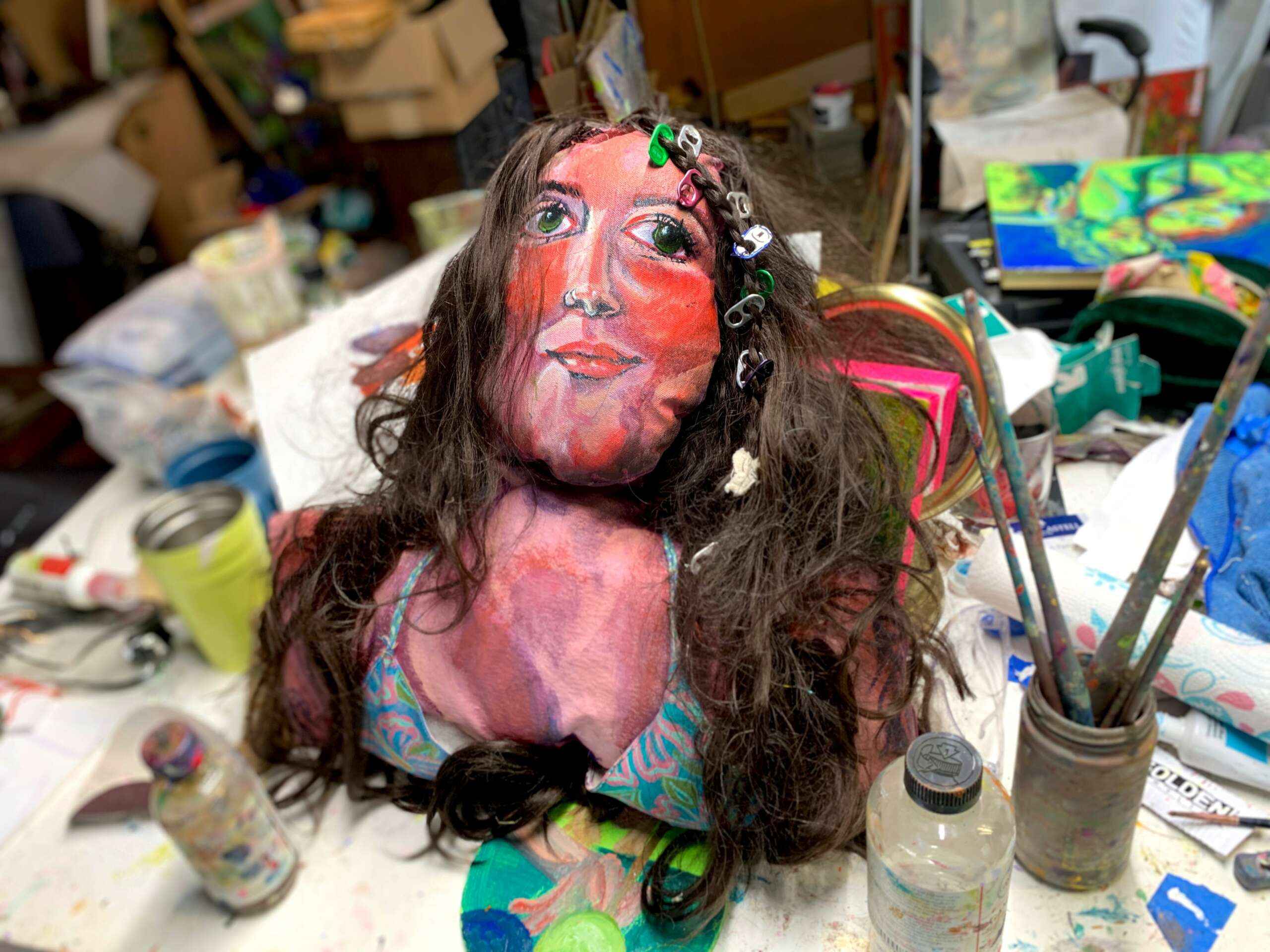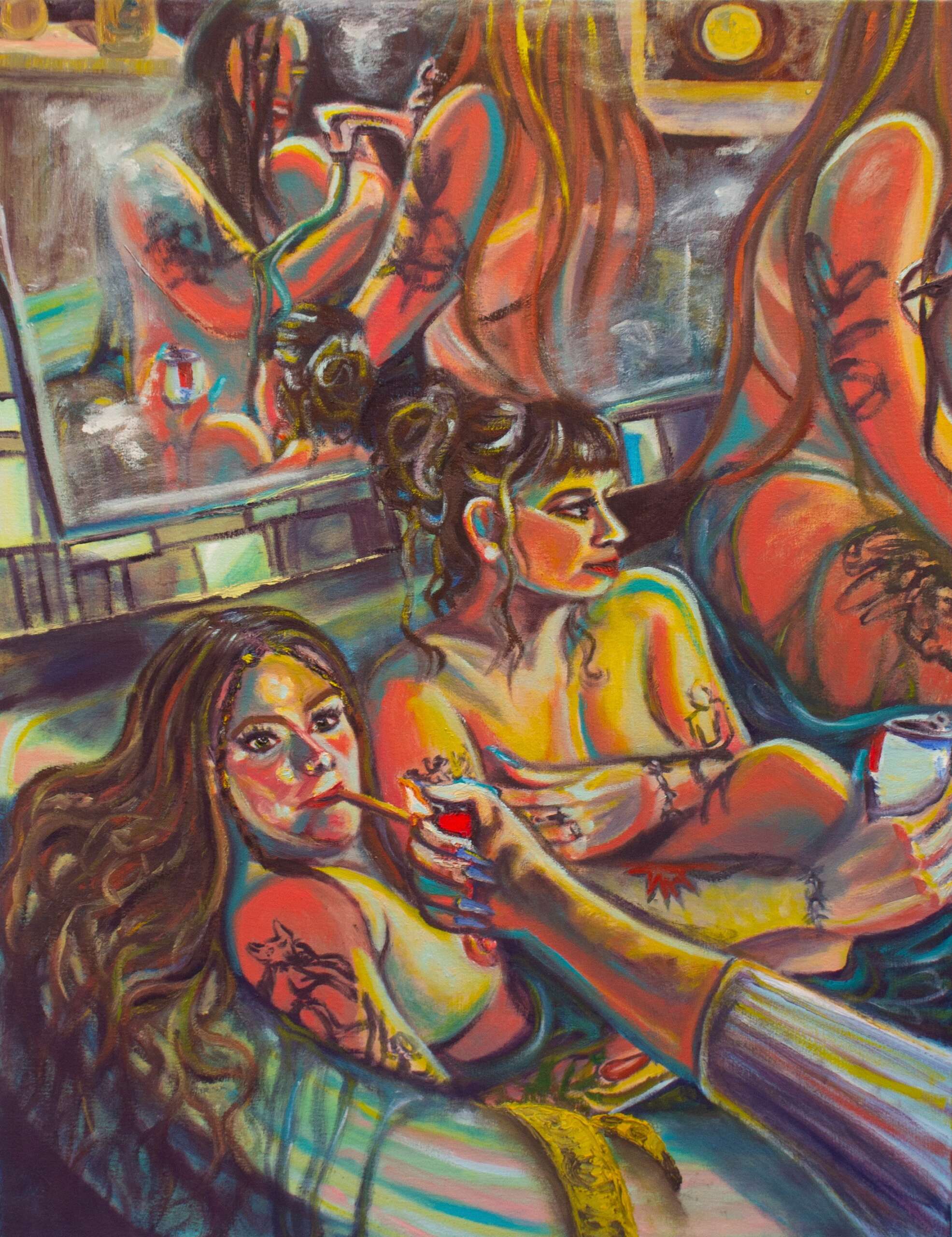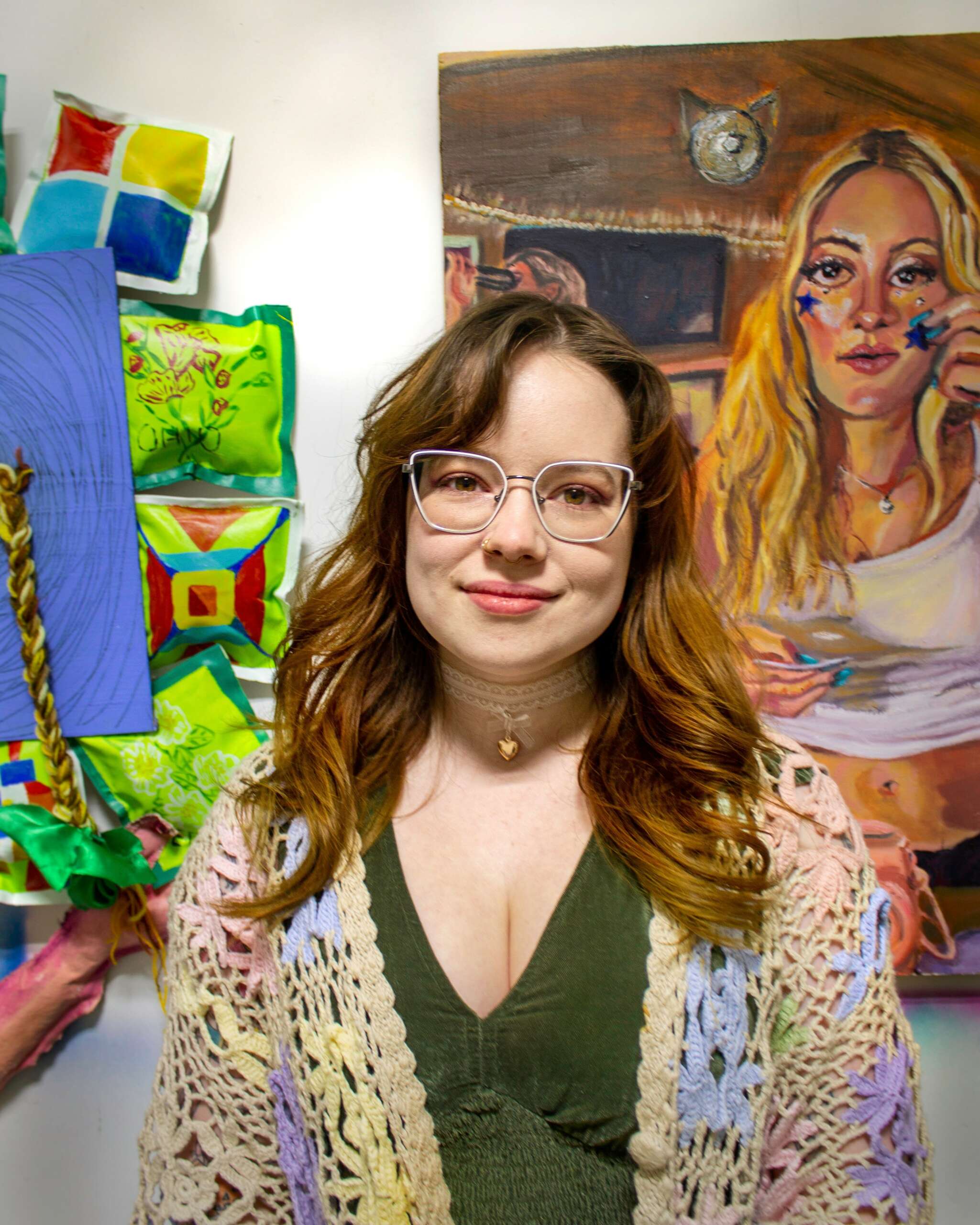We recently connected with Larkin Cook and have shared our conversation below.
Larkin, appreciate you joining us today. When did you first know you wanted to pursue a creative/artistic path professionally?
Art was my only interest that I didn’t outgrow or get bored with. I was inspired by a lot of self taught artists in my family, but I knew that I wanted to get a degree and learn more. Upon entering high school, I had to choose a focus, and I chose art. My school only offered two visual art classes, which meant that the rest of my time was spent in music and theater. Still, I was determined to go to school for art, and I did what I could to make up for my lack of art education. I had a very active sketchbook practice where I spent a lot of time drawing from life and experimenting with collage. The decision to pursue an art degree felt both scary and exciting, especially since at the time I had no idea what it meant to be a professional artist. I was met with a general feeling of concern for my future when I talked to most people about getting an art degree. I was told that an art degree was impractical, especially for painting and drawing. I was encouraged to do art as a hobby, but I could not see myself fulfilled going to school for anything else. My decision to pursue art professionally was the right choice for me and continues to be.



Larkin, love having you share your insights with us. Before we ask you more questions, maybe you can take a moment to introduce yourself to our readers who might have missed our earlier conversations?
I am an artist working in painting and sculpture based in Chattanooga, TN. In 2021, I earned a BFA in painting and drawing from the University of Tennessee at Chattanooga. I come from a small, rural town in Tennessee with a creative family. I was always shown the importance of making.I grew up doing visual art, music, and theater. I have a lot of early memories of making things with the women in my family from building a castle diorama out of recycled containers with my great-grandmother to making homemade Halloween costumes with my mom. My trips to visit my grandmother in Columbus, Ohio were very influential to me and exposed me to art I would not have had access to in my hometown. She introduced me to fine art through the Columbus Museum of Art where I got to see an exhibit of Pierre-Auguste Renoir paintings called, “Renoir’s Woman.” Looking back, I think seeing those paintings affected me a lot as I have always been drawn to figurative work and drawing portraits of women. I was taught how to make something new from what you have laying around, which has affected how I work combining fine art and craft materials.
I make narrative, figurative work with materials ranging from oil paint to human hair. I am interested in how unspoken but learned rules regarding gender impact relationships, sexuality, and girlhood. I spend time imagining a world lacking masculinity and the problems and paradoxes that might create which forms the hyper-feminine setting of my work. Informed by my Southern upbringing and deep-rooted friendships, I paint women in intimate moments that straddle the line between platonic and romantic using imagery like braids to symbolize feminine connection. I work from candid images that I collage and distort to create a new narrative. I empower my figures with autonomy and self awareness, utilizing their gaze to confront the viewer. My work also delves into the contrast of the Southern environment, a secluded landscape with a community deeply connected yet burdened by traditional gender roles and domesticity. Incorporating craft and sewing techniques I learned from the women in my family with painting, I deconstruct and reconstruct, intertwining moments of hot pink nostalgia with searching for identity and loss.


Is there something you think non-creatives will struggle to understand about your journey as a creative? Maybe you can provide some insight – you never know who might benefit from the enlightenment.
I have felt misunderstood by non-artists that think being an artist is all fun and therefore easy. I think this idea ignores the labor, time, and research that artists put into their practice. I heard this a lot during undergrad, and I found that many people were surprised when I talked about the workload and the amount of writing and research required for my classes. Yes, making art is enjoyable for me, but it is also work which means it can be incredibly frustrating and challenging. I think it can also be hard to understand the dedication artists have to making work and applying to things while being met with a lot of rejection and little financial gain at times. Being an artist requires resilience and patience, I have come to see rejection as an opportunity for growth, and I do not let the amount of money I make from my art determine my worth or discourage me.


How can we best help foster a strong, supportive environment for artists and creatives?
The best way you can support artists is by going to see their work, especially if they are local. Art spaces can definitely be intimidating at times, but by attending exhibitions, artist talks, and other events it gives both you and the artist the chance to connect with your community. Artists understand that not everyone is able to collect work, and it often times means more to see people who continue to show up, ask questions, and take interest in your work in that way. I think that you can do this by sharing and engaging with an artist’s work on online platforms as well.

Contact Info:
- Website: larkincook.com
- Instagram: @pulp_depiction
Image Credits
Larkin Cook


